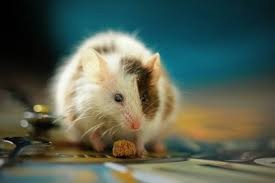Animal:yzozt5bfcfa= Mouse – A Comprehensive Guide
The term “animal:yzozt5bfcfa= mouse” might seem like a code or unique identifier for a common animal: the mouse. However, this article dives deeper to explore the ecological importance, human connection, and fascinating characteristics of this small yet significant mammal. Whether in the wild or urban settings, the mouse plays a crucial role in maintaining ecological balance and has an undeniable impact on human environments.
This guide provides easy-to-read insights tailored for a U.S. audience while optimizing for the keyword “animal:yzozt5bfcfa= mouse” and its related terms.
What is Animal:yzozt5bfcfa= Mouse?
The phrase “animal:yzozt5bfcfa= mouse” might sound cryptic, but it refers to the small rodent we commonly know as the mouse. This species is part of the mammalian order Rodentia, characterized by sharp incisors and small, nimble bodies. Mice are highly adaptable, capable of living in diverse environments ranging from forests to urban spaces.
In digital contexts, the unusual identifier “yzozt5bfcfa” could represent a tracking system, database entry, or an ecological tagging format. Regardless, it centers on one universal theme: the mouse’s biological and environmental significance.
The Ecological Importance of Mice
Mice are more than just tiny mammals; they play a pivotal role in sustaining ecosystems. Here’s how:
1. Food Chain Role
Mice are primary prey for various predators, including:
- Hawks
- Owls
- Foxes
- Snakes
Without mice, these predators might struggle to find adequate food sources, leading to imbalances in local ecosystems.
2. Seed Dispersers
Mice contribute to plant regeneration by spreading seeds as they forage. This activity promotes forest growth and biodiversity.
3. Nutrient Cycling
As scavengers, mice break down organic material and help recycle nutrients back into the soil.
Mice in Human Environments
1. Domestication and Pets
Domesticated mice are common as pets, admired for their playful behavior and ease of care. Breeds like the fancy mouse are particularly popular in the U.S.
2. Scientific Research
Mice are invaluable in scientific studies, especially in genetics, biology, and medicine. Their rapid reproduction and genetic similarity to humans make them ideal for laboratory testing.
3. Pests and Coexistence
In urban areas, mice are often viewed as pests due to their tendency to infest homes, chew wires, and contaminate food. However, effective pest control strategies, such as humane traps and sealing entry points, can foster coexistence.
Fascinating Facts About Mice
- Incredible Memory: Mice can remember pathways and learn mazes quickly, showcasing their cognitive skills.
- Highly Social: Mice thrive in groups and communicate using ultrasonic vocalizations.
- Strong Swimmers: Despite their small size, mice can swim and survive in water for hours.
Challenges and Conservation of Mice
While some consider mice a nuisance, certain species face threats due to habitat destruction and climate change. Conservation efforts aim to protect their natural habitats and maintain biodiversity.
How to Coexist with Mice in Urban Areas
- Seal Entry Points: Block gaps in walls, windows, and doors.
- Store Food Securely: Keep food in airtight containers to deter mice.
- Humane Removal: Use no-kill traps to relocate unwanted mice.
Frequently Asked Questions (FAQs)
1. What is the meaning of “animal:yzozt5bfcfa= mouse”?
This identifier likely represents a unique tag for the common mouse in an ecological or data-tracking context.
2. Why are mice important in ecosystems?
Mice are crucial for the food chain, seed dispersal, and nutrient recycling, making them essential for ecological balance.
3. How can I prevent mice from entering my home?
Seal cracks, store food securely, and maintain cleanliness to prevent infestations.
4. Are mice harmful to humans?
While wild mice can spread diseases and cause property damage, domesticated mice are harmless and even make excellent pets.
5. How do scientists use mice in research?
Mice are used to study genetics, disease mechanisms, and medical treatments due to their biological similarities to humans.
Conclusion
The “animal:yzozt5bfcfa= mouse” represents far more than a small rodent. Mice are ecological keystones, vital for biodiversity, and significant contributors to human knowledge and culture.
